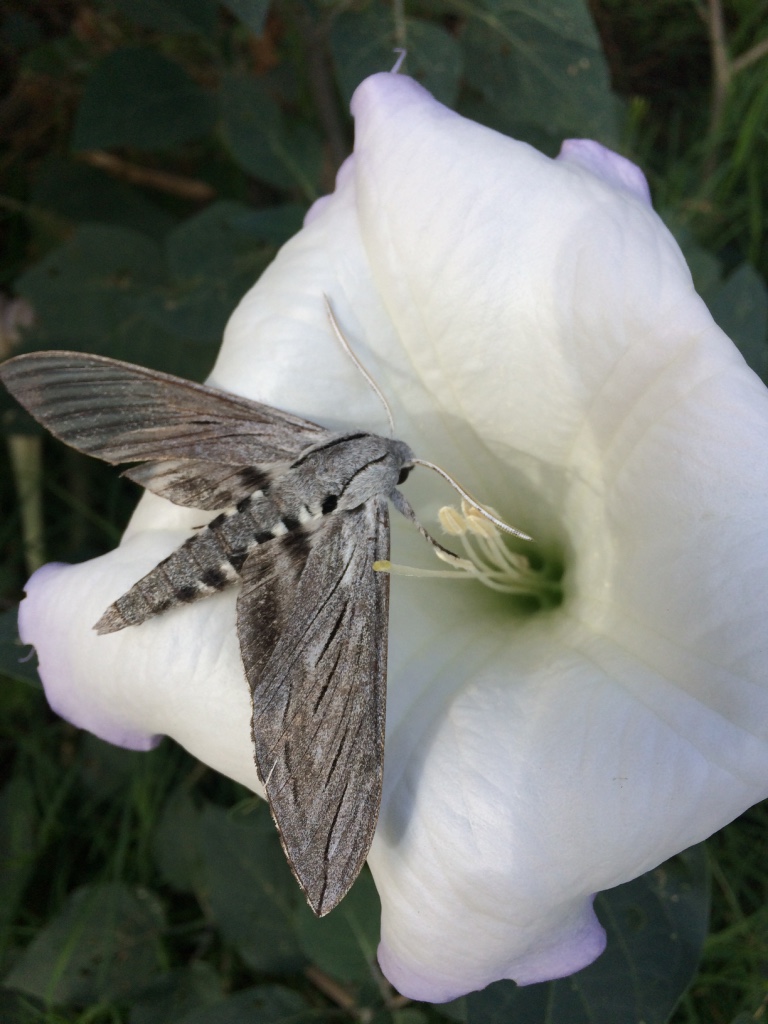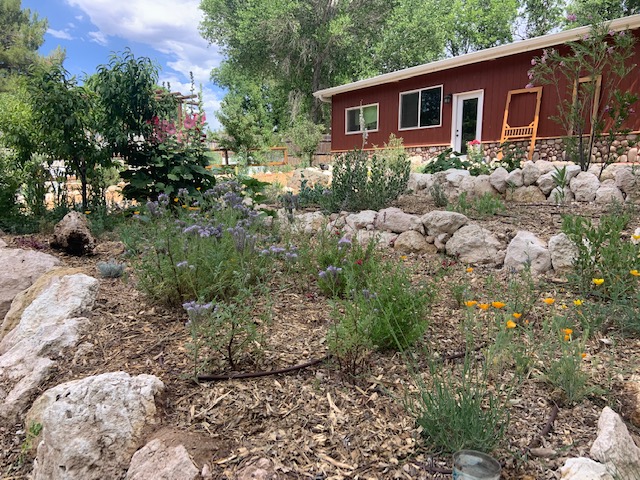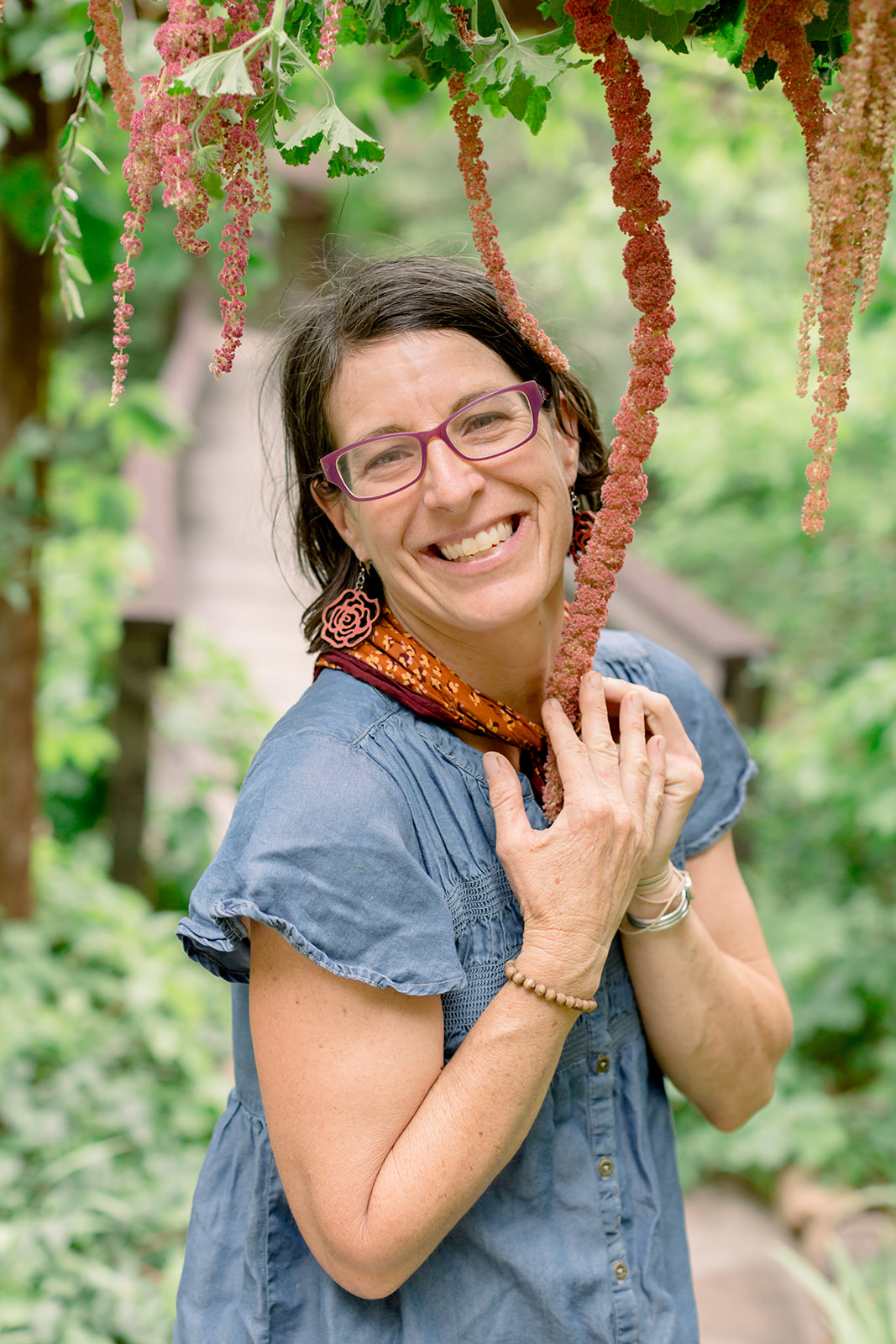
June is National Pollinator Month and hopefully Flagstaff has made it through the last frost of the season so we can start to enjoy the benefit of pollinators in our gardens, both for joy and for higher vegetable yields. At Wild Heart Farm where I live and grow specialty cut flowers we are delighting in the daily drama of our pollinator garden.
About a year ago, we received a grant from the U.S. Fish and Wildlife Service and Friends of the Verde River to create permanent pollinator habitat on our one-acre farm. There were days I regretted signing on to this ambitious project in my first year on this land and in the midst of a global pandemic. In order to transform the bare slope into a level terraces for plants to establish, we moved several tons of rocks and soil while temperatures hovered over 100 degrees. The high-maintenance dahlias I grow for wedding bouquets suffered with my divided attention, and I lost steam just at the time I needed to rally to plant thousands of fall bulbs. Yet today when I walk by the pollinator garden alive and in its prime, I do not regret any of it.
Hummingbirds are building their nests nearby and sipping nectar from the firecracker penstemon and salvia. The Palmer’s penstemon has curved and gangly stalks bearing giant, fragrant, pink flowers with wide open throats—a chorus singing songs of glory. The carpenter bees in particular are listening and smelling and responding. These native bees have formative stature, and gleaming black bodies. They clumsily hover around the flowers, squeezing themselves into a blossom while the entire stalk sways. I watched two sparring and tussling inside the same flower. These bees were not present last year. If you build it and plant it they will come!
All shapes and sizes and species of bees visit the phaecilia flowers, a fast growing native with lavender flowers that unfurl like a scorpion tail. Our neighbor has honey bees and while I watch them happily forage in my cut flower garden on bachelor buttons and zinnias, I chose regional plants to attract native bees for the pollinator garden. Pollinators and plant diversity are inextricably linked. There are 20,000 bee species in the world, and 1700 reside in Arizona. Arizona is home to over 3500 plant species—the fourth highest plant diversity in the U.S.
On our microfarm, bed space for cut flowers is at a premium and I am often faced with difficult choices as I make my livelihood from the earth. Capitalism cries out “Grow more flowers! Make more money!” I feel the tension in my body as I step on the flower farming treadmill each morning, crunching my crop plans, counting days to harvest, and finding markets for each bloom until every flower is grown, picked and sold. I could fill every square inch of the soil with a marketable crop and scale my farming operation to that level of production but it is not sustainable for the land or myself.

The pollinator garden is one way I take a stand against the extractive mindset, and grow something for a greater benefit, for the big picture, something that does not figure into my profit margin. This dance of business and farm owner is new to me and I am learning and adapting as if I am a mutualist partner with this land and these plants. Mutualisms are found everywhere in nature. Two species exchange goods or services and each receives a benefit from the interaction in an evolutionary agreement. That benefit usually comes at a cost, and both partners may not receive equal benefits or incur equal costs. Each species is operating on purely selfish motivations. The benefit is usually an unintended consequence of the interaction. This year we have a bumper crop of fruit in the orchard, thanks to the pollinators!
I watch the giant white moon blossoms of sacred datura flowers open each evening and enjoy their incredible fragrance. I also anticipate the giant tomato hornworms that will come to feast on its alkaloid-rich leaves before it transforms into a sphinx moth in its adult stage—one of the only species that can provide the service of pollination so this plant can make seeds. They are also dance partners throughout their life cycle, exchanging pollination services for protection as feeding on this plant makes the caterpillars toxic to predators. As I marvel at this mutualism, I often wonder as I go about my farm work what are the costs and benefits being exchanged between humans and the Earth? How can I balance this exchange?
To sustain human life and plant diversity we need abundant pollinators, and yet pollinators are in decline. According to the U.S. Department of Agriculture we are losing pollinator populations due to invasive pests and diseases, exposure to pesticides and other chemicals, loss of habitat, loss of species and genetic diversity, and a changing climate. Although it feels altruistic to plant a pollinator garden, it is truly an act of human survival, as over one third of the food we eat is thanks to pollinators.
I took a break from trellising sweet peas and sat on a rock in the pollinator garden. A Monarch butterfly flitted gracefully onto the scene. While once prevalent, today Monarch populations are in steep decline. I was surprised when this butterfly landed on a native cryptantha plant (literally Latin for hidden flower because they are so small) that volunteered in the cracks of the stone path. Beginning in March, these butterflies migrate from wintering grounds in Mexico and California and travel as far North as Canada. They need nectar to make the journey, and milkweed host plants to lay their eggs and provide food for their larvae so they can pupate and become adult butterflies (sometimes 2-3 generations during the summer) and the last adult returns to the wintering ground in the fall. I hope you will join me to celebrate National Pollinator Month by planting something in your backyard to attract pollinators and watch in wonder as the magic unfolds all around you.

